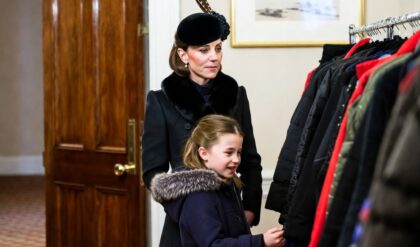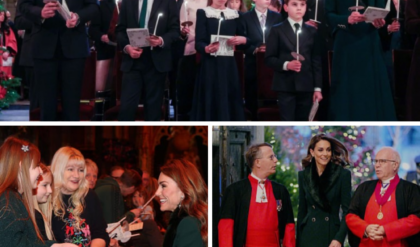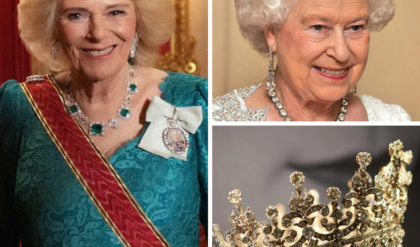The Star Wars streaming series’ revelations about how the Jedi first crossed paths with Osha and Mae add another layer to the galaxy far, far away’s view of colonialism in the era of the High Republic.

One of the main purposes of The Acolyte is showing how the Jedi went from the guardians of peace and justice in the galaxy, to the flawed Order seen in the Prequels. In an interview with the official Star Wars site before the series aired, showrunner Leslye Headland made it abundantly clear the point of the series (and its setting) was to show how the Jedi lost their way: “If Star Wars is about the underdog versus the institution, [in The Acolyte] the Jedi are the institution.” Furthermore, The Acolyte asks a key question before the fall of the Jedi: “What went wrong?” Headland explained. “And if the bad guys are actually the underdog, it just seemed like a cool reversal.”
How the show highlights this aspect is intriguing, especially in the ways it touches on ingrained ideas of colonization and assimilation. Ostensibly, the series is focused on a big mystery. While the marketing pointed us in the direction of a murder plot, we discovered fairly early on the real mystery at the heart of the story centers on twins Osha and Mae (Amandla Stenberg) and how they came to be involved with the Jedi and Sith, respectively.
The mystery comes into focus during the third episode of the season, “Destiny,” which serves as an episode-long flashback. We glimpse the life of the twins as young girls, observing their culture and ways while seeing the traumatic events which set them on their differing paths. It was pretty clear, even when the episode originally aired, we weren’t getting the full story on what happened that night. Fans were left to speculate until the seventh episode, “Choice,” revealed the extent of the Jedi involvement, and it cemented a thought I’d nurtured for weeks. Rather than just showing the Jedi swamped in bureaucracy, The Acolyte uses the colonial idea of missionaries as a metaphor to highlight the Jedi losing their way.
In our world, missionaries served as the frontline for colonization. They believed they were bringing civilization, and they imposed their values and morality onto others in order to make the physical occupation smoother (theoretically). Shogun does an excellent job of showing this tactic in action, and Star Wars has pretty much always been a metaphor about colonialism and imperialism. So seeing it explicitly focused on in The Acolyte set my Native American senses tingling.
Who Decides What’s Right?

With the full picture of what happened on Brendok now out in the open, we see clearly how Sol jumps to the conclusion that Osha and Mae need to be “rescued,” even to the point where they literally break the locks and force their way inside the coven’s home. The problem is how quickly Sol jumps to the conclusion with very little evidence, while the others (barring Indara) follow along with it.
Essentially, it boils down to seeing younglings with Force potential being trained by another group and immediately deciding they need to be rescued. At its most basic, this is textbook colonizer ideology; the core idea that only they are “civilized” and need to impose that on others. In terms of the Jedi, the idea is they’re the sole custodians of what is good, or right, when it comes to the Force. They’ve been given a legal mandate for it as well. Indara mentions a Republic law regarding unsanctioned training of children in the Force, on top of saying the Jedi “have a right” to test for potential padawans. As a Native American, it’s almost impossible to not see the colonization parallels within these actions. It’s not colonizing in the traditional sense of “the Jedi are trying to steal land,” but the colonizer mindset extends well beyond that. Instead, we see something more akin to the idea of forced assimilation that came after.
Perhaps the clearest insight to this mindset for the Jedi on Brendok is during Sol and Indara’s conversation aboard their ship after first meeting with the coven. Sol brings up the marking Mae acquired from the Ascension ceremony—explicitly saying, “They marked her sister with dark magic.” It’s a very telling statement. His mind immediately goes to branding something different as dark, or evil. Even as Indara reminds him, “Ceremonial markings are customary in many cultures in the galaxy,” he doesn’t relent on the subject. Rather he maintains it as some sort of proof the witches use of power is innately wrong.
This particular moment hit me hard. Historically, the first thing missionaries did was get rid of all the unique aspects of the Indigenous people they were dealing with, often by presenting cultural markings, rituals, or histories as being signs of something evil. Something that must be cast aside. Through a combination of shame and brute force, stripping the Indigenous of their identities was a key factor in them gaining a foothold. Who can forget the infamous Mayan “book” burning conducted by Franciscan friar Diego de Landa in 1562? In that example, he destroyed nearly every historical record of the Mayans because he believed they contained “superstition or the wiles of the devil.”
We’ve all heard about Indigenous tribes who were discovered running around unclothed and seeing nothing wrong with it until outsiders came in and told them it was wrong. More specific to the “marking” in Acolyte, however, there are numerous Native tribes who incorporated ceremonial tattoos, even scarring, as part of their culture. Notably, the Gwichʼin facial tattoos (for women) are beginning to make a resurgence. Younger generations are diving into the history of their people and coming to understand certain practices stopped because invasive missionaries forbade them. The purpose behind such tactics is simple: it allows missionaries the chance to then implement their own ideology instead. People, generally speaking, long for a connection with others. In the absence of their own heritage many Indigenous people understandably latched onto the only option given to them. It doesn’t matter that it’s being presented by the very people who took everything else away. When people are manipulated into believing their way of life has been “wrong,” they’re more eager to “do it right.” It’s the major reason children were separated from their families at a young age, as elders would resist these ideas. But when you take impressionable children and place them into a school where they’re immersed in the new dogma, then you’ve got a whole generation who’ll do the missionaries work for them.
We see this presented clearly within Osha’s journey. She has an immediate wish to connect with the Jedi, though I’d argue that stems from a more general wanderlust or desire to explore beyond her isolated community. After the coven is destroyed, however, the Jedi are all she has. Yet despite throwing herself into their teachings, something doesn’t quite fit. After leaving the Order, Osha continues to adhere to their dogma and is eager for their acceptance. When Sol is putting the team together for the trip to Khofar in “Day,” we see Osha light up with hope and joy when she’s invited along: “You want me back?” Even on Khofar, she yearns to be helpful, to jump into the action despite being relegated to a “civilian” position. Qimir points out later on, even after all these years, Osha still considers herself “one of them.”
On the flip side, we see this aspect in Mae’s quest for revenge. She adopts the Sith teachings because they seem to be the only option available to her, but she doesn’t embrace them completely, and is willing to drop them once she realizes her sister is still alive. The minute it seems like she may have a chance to reconnect with her heritage, she’s willing to risk it all. The kicker is that offering education, modernity, or opportunity (new life and family for Osha) feels like an altruistic goal. For those born and raised to the idea they’re the sole arbiters of what is righteous, it’s genuinely hard to see these kinds of actions as being wrong. This is what makes colonialism and assimilation so insidious; it allows perpetrators to hide behind good intentions.
The Jedi Way

Make no mistake, what the Jedi did on Brendok is wrong. On the most basic level, here’s how things went down:
Sol hid himself and followed the girls to discover the location of their home.
He then spied on them (after breaking into their home)
Without the full facts, he decided the coven is “bad” and thus putting the girls in danger.
ALL of them then break into the coven’s home and disrupt one of their culturally important ceremonies to, essentially, demand to test the children.
Unwilling to be patient, and in total defiance of the Council’s orders, they break into the coven’s home again, armed and ready to take the children by force if necessary.
In one hell of a grand misunderstanding, they then kill the coven’s leader (and apparently all the witches) and whisk Osha away after choosing to save her instead of her sister, Mae.
Oh, and to top it all off, they all agree to cover it up.
We can argue intentions and how some of the actions—reactions—on the witches’ part aren’t particularly great either. In fact, there’s a long history (and current reality) of branding the actions of Indigenous people defending themselves as being too violent. Savage. Even as they retaliate for horrendous crimes committed against them, they’re considered the ones in the wrong. I could discuss this aspect all day, but it’s neither here nor there. The truth is, none of the arguments about the Jedi’s intentions alter the fact they never should have been there to begin with.
What I love about The Acolyte’s handling of this event is how it shows the Jedi genuinely doing what they thought was best (at least in how everything kicked off). We’re shown how they have good, even noble, intentions behind their actions. Personally speaking, I’ve never been one to subscribe to the “Jedi stealing kids” idea-slash-criticism that’s been bandied about in fandom for decades. By and large, the Jedi are the good guys. They embody the ideals we hope to show within ourselves. What leads them astray, however, are the systemic issues within the Order itself, and the encroaching idea that they are the only good guys.
This is the main concept behind their downfall in the Prequels. They became so certain of their righteousness, they were unable—unwilling—to see the flaws which needed correcting. The Acolyte hammers home this idea. In doing so, it compels fans to face some uncomfortable truths. Namely, even good people, with good intentions can still do horribly wrong things.
From a Certain Point of View

It’s incredibly hard, both in real life and fiction, to reconcile the idea that decent people with the best intentions are capable of doing something so fundamentally wrong. Heinous even, in some instances. I’ll be honest, I have a soft spot for Sol in The Acolyte. What we’ve seen of him throughout the series presents us with a character who cares about duty and his role as a Jedi Master. His relationship with both Osha and Jecki reveals a fatherly mentor who’s equal parts encouraging and caring. Yet we come to find out his story is more complex. That his genuine earnestness has led to some poor decisions with terrible consequences. Despite how noble his initial intentions were; these are actions that require accountability. Or at least honest acknowledgement for what they are. Difficult as it may be, it’s crucial to not make excuses for people we like and trust.
There’s been no shortage of defenses flying around online in regards to Sol and the other Jedi on Brendok. Some fans have made the case the Jedi are able to sense darkness. Thus, it stands to reason their actions might be justified due to their abilities to intuit things others (especially the audience) cannot. Here’s the thing, though: the Jedi are still just people. As we’ve seen, they’re fallible, and can even misinterpret what they’ve sensed in the Force thanks to a variety of factors. For Sol and this specific team of Jedi on Brendok, we have to remember they have little experience with actual darkness. We’re in a period of time where the Sith have been supposedly wiped out. The Nihil threat from the High Republic novels (set 100 years before the series) are already well behind them, and even the more prevalent “Force Sects” have seemingly dwindled in number and influence. This begs the question: are they feeling a “darkness” or something “strange?” In an organization so insular in their beliefs and trained since an early age, any other usage of the Force would be seen as strange, even unsettling. Their lack of experience with other Force cultures outside their own means making the jump from “strange” to “evil/bad” is all too easy.
Then we have Indara, who’s frequently been brought up by defenders for her handling of the witches and their cultures. I was thrilled when “Choice” revealed her to be the voice of reason, compassion, and even understanding (though she too refers to the witches as “strange”). It was fantastic to see the Council agreeing the coven should be left alone; even believing they’d already interfered too much. It helps to show there are still reasonable people within these institutions. Yet we can’t ignore how Indara also makes a poor decision: choosing to cover up the full nature of the events on Brendok. Her reasoning is well-intentioned (hoping to spare the girl from even more pain), but that doesn’t make it the right call. In this, we see another parallel to the colonizer mindset.
Atrocities are not committed in the dark. There’s a reason why we’re only just now uncovering the bodies of children buried underneath schools. So many terrible things were kept under wraps for decades, and it took tenacity and hard work to reveal them. Worse, we know there are an untold number of horrors which have still gone uncovered. In these instances, does it matter that good people were present? Does it matter that they weren’t actively involved, maybe even spoke out against it, when they remained silent afterwards; knowing it could happen again?
In using this particular metaphor, Acolyte continues a long tradition of Star Wars pulling on Indigenous parallels to get the message across. While it started with George Lucas’ original film (which the film maker has posited as portraying the Rebels as the Vietcong), I’ve enjoyed seeing how more recent Star Wars stories have more deeply explored the Indigenous experience. Andor gave us a new backstory for Cassian, showing how “outsider” conflicts still impact Native cultures. There’s even discussions to be had about Maarva making the decision to “rescue” Cassian while scavenging on Kenari, effectively separating him from his only family. Before that, The Book of Boba Fett did a (mostly) excellent job of expanding on the Tusken Raiders, elevating them from Indigenous stereotypes to a more complex, and earnest, representation of a culture.
The Acolyte presents us with some messy, complicated characters. Even as we enjoy their stories and arcs, we’re forced to reckon with their actions. Much like we’re sometimes forced to reconcile the bad deeds of people in our own lives with our own personal (positive) experiences.





